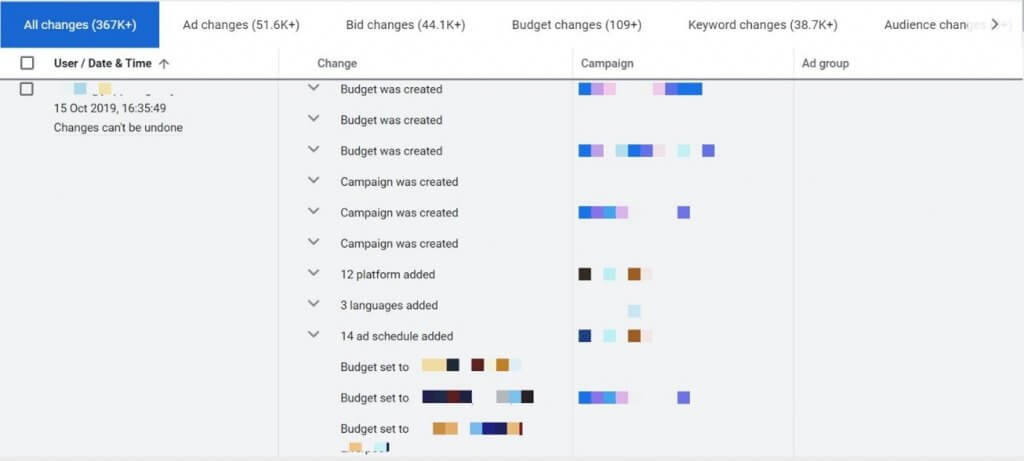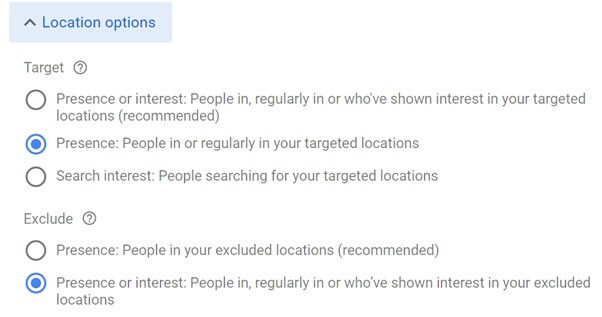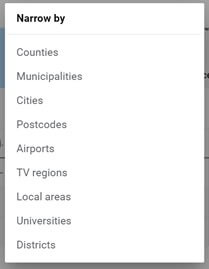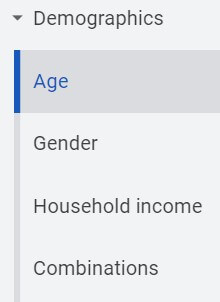What should I look for in a PPC audit? 33 useful suggestions
A PPC Google Ads account audit is a deep dive into your Google Ads account to ensure that everything is working as it should. You also look to see if any improvements can be made.
It is a good idea to carry out a PPC audit on your Google Ads account every few months. Often when working on an account for a long period, it can become difficult to think of new ways to take an account forward.
Therefore, it is a good idea to ask someone else to carry out a PPC audit on the account. This will give you a fresh and new perspective on how the account is doing and what can be done to improve it.

Another person may pick up on a few things that you had not thought of. In this blog, we will identify thirty-seven things that you can look at when carrying out a PPC audit on a Google Ads account that uses Search campaigns.
Thirty-Three things to look at when doing a PPC audit
Before jumping into a Google Ads Search campaign account audit, I like to look at the change history. You can access the change history by clicking on the Change History button on Google Ads’ left-hand side.

The change history will show you what kind of changes were recently made. It gives you an idea of what the person managing the account has been thinking lately and what they’re working towards.
Below are 33 things that you should look at when doing a high-standard PPC audit.
1. Spelling mistakes in keywords
Spelling mistakes in keywords can stop your keywords from appearing on relevant searches. There is still a chance that you will pick up the traffic as a close match variant, but in some cases, this won’t happen.
One way to check for spelling errors in your keywords is to copy and paste all your keywords into an Excel spreadsheet and run the spell checker tool.
2. Spelling mistakes in ad copy
A spelling mistake in your ad copy can be embarrassing if a potential customer spots it. You can paste your ads in Microsoft Excel and use the spell checker to find spelling errors.
3. Spelling mistakes in ad extensions
In addition to ensuring that your ad copy doesn’t have any spelling mistakes, check all the ad extensions used in the account and fix any spelling errors.
4. Network performance
Check the networks being used and the performance of each network. All advertisers running a Google Ads Search campaign will advertise on Google’s search engine. In addition to this, Google ads advertisers can choose to have their ads show on Search Partners and Display Select.
Check the performance of the Display Select as well as Sear Partners to the Search Network. If either Display Select or Search Partners’ performance is much worse than the Search Network, you may benefit from removing them.
5. Ensure all relevant extensions are being used
Giving Google as many relevant ad extensions as possible will give Google more ad formats to test. It will then be able to use the ad copy and ad extension combination that performs the best and improve your account’s clickthrough rate.
Check the Ad extensions being used and ensure that all relevant ad extensions are in the account. As a minimum, all accounts should have the below ad extensions. There most likely will be more that can be added as well.
- Sitelinks
- Callouts
- Structures Snippets
6. Can Ad Extension messages be improved?
After checking that all ad extensions are present in the account, check to see if the messaging quality in the ad extension is good enough.
Whilst doing this, think about whether the messaging in the ad extensions would help to persuade someone to click on the ad. Ensure that any relevant emotional triggers or USPs are being utilised in the Ad Extensions.
7. Irrelevant traffic being picked up
Have a look at the Search Terms report in the last 30 days and check to see any irrelevant traffic being picked up.
Make a note of all irrelevant traffic and block them out. This will allow for the budget to be spent on better quality traffic.
8. Very poor performing keywords/ad groups
Look for very poor performing keywords or ad groups. Choose a long date range and look for keywords/ad groups with high spend and zero conversions.
You can also look for keywords/ad groups with high spend and a very poor cost per conversion (CPA) or Return on Ad Spend (ROAS).
Once you have identified these keywords/ad groups, you can start looking at why they perform poorly. Perhaps the ad copy gives the users the wrong impression, or maybe the landing page isn’t right for the type of people searching for those keywords?
If the keywords are performing close to your target CPA or ROAS, then you may want to drop the bids. However, if the keywords are performing very poorly, then it may be worthwhile pausing them.
9. Very low impression share keywords
Sometimes in large accounts, keyword bids can be dropped to a point where they have little to no impression share to reduce the monthly PPC spend. When bids are increased, these keywords may not get a bid increase as they don’t have any recent historical data.
Look for keywords with an impression share that is less than 10% and consider increasing its bid to start building performance data from it.
When doing this, look at a long date range to identify how the keyword performed when it had a higher impression share.
If it performed well, then you should be able to increase it’s bid. If it has historically performed poorly, then alongside increasing the keyword bid, think about how to improve the keyword’s performance.
Have a look at the search terms report for the keyword to see if there is any poor-quality traffic, write a better ad or improve the landing page being used for that keyword.
10. Deal with out of season keywords
Sales for some business niches are highly seasonal based. This is especially true for businesses that sell clothing. They would expect to sell more thicker clothes like coats, jackets, and gloves in the winter months.
During the summer months, they would expect to sell thinner clothes such as T-shirts and shorts. If you’re auditing an account that sees changes in performance due to seasonality, make sure you look at the type of keywords currently being run.
If you see some keywords that are out of season, then it may be worthwhile seeing how they have performed in the last seven or fourteen days. If they have performed poorly, it may be useful to either pause or drop the bids on them.
11. Is conversion tracking setup?
Ensure that conversion tracing has been implemented. To do this, go to the Conversions page within Google Ads to see if you have any conversion actions.
A quick way to check if your conversions are working is to select a long date range and then look for any tracked conversions.
12. Are all relevant conversion actions being recorded?
If conversion tracking has been implemented, then check to see if all conversion actions that the business should be tracking are being recorded as conversions.
For example, an account looking to obtain leads may be tracking form completions, but how about tracking newsletter signups, PDF downloads and phone number button clicks? Tracking these touchpoints will show the full value of each keyword.
While it is beneficial to track all touchpoints, there may be some conversion actions that you value more than others.
In this case, within the account settings section, you can set which conversion actions should come through the Conversions column. You can then track the other conversion actions via the All Conversions column.
13. Location targeting settings
Review the location targeting settings. These can be found by clicking on the Settings tab within a campaign. Then click on Locations and Location options.

From here, you can select whether you want to target people who either show an interest in your targeted locations, are in your targeted locations or both.
In general, I have seen the best performance from targeting only people who are in my targeted locations. Unless you have a specific reason for doing so, I would only target people who are actually in your targeted locations.
14. Poor performing locations
Look at your location report to see if any cities/towns are performing very poorly. These can be excluded from your location targeting.
There are a few ways to look at the performance of your campaign by city. One way is to click on the Locations tab and then click on the country being targeted.
This will open a window that will allow you to select how you want to dig into the data. Select cities to see the performance broken down by city.

Once you select a city, you will see your campaign’s performance data segmented by city. Look through the data to see if any cities have a high spend and no conversions. You could consider excluding these cities.
You can also look for cities that are performing much better and much worse than the average campaign performance. You could decide to increase or decrease the bid adjustment in these cities.
15. Choice of bid strategy
Look at the bid strategy being used and think about whether it is the best one to use. For example, Smart bidding options need a decent amount of data to be able to optimise bids.
The more data they have available to them, the better they tend to perform. If your Google Ads account isn’t getting a lot of traffic, it may be a good idea to consider a manual bidding option.
If you’re selling products that all have a different value and have enough data, then it may be a good idea to use the Target ROAS bidding option. If the account is using Target CPA, you may be able to increase your return on ad spend by switching to the Target ROAS bidding option.
It is also important to know when Smart bidding is most likely to work well and when it is best to stick to manual bidding. I tend to find that Smart bidding works well when the campaign is very broad targeting, and the impression share is less than 75%.
This allows Smart Bidding to use the data available to decide which users are searching for a relevant keyword to bid on and which ones not to bid on.
16. Limited by budget campaigns
If you have a campaign that is limited by budget, you will see the below message in the Status column. In general, you should not have any campaigns that are limited by budget.

The budget for a limited budget campaign is not high enough for Google Ads to show your ad every time the Ad Rank is high enough for the ad to appear.
This means your ads are not showing when they could due because of the limited budget.
There are a few things that you could do with a limited budget campaign. The easiest thing to do is to increase the budget. If this isn’t an option, then consider dropping your bids slightly.
This will allow you to get more traffic for the same budget. Another option is to consider what keywords you’re bidding on and whether there are any very poor-performing keywords that can be paused to allow the budget to be redirected to the better-performing keywords.
17. A lot of broad match keywords
In some circumstances, broad match keywords can target relevant search terms that you may not have thought of.
However, if you are getting a lot of traffic from broad match keywords, you could probably improve your performance by picking up the same traffic via exact and phrase match keywords. This is because if you take the same traffic and pick it up via multiple exact and phrase match keywords, you can segment the traffic out into various ad groups.
This allows you to bid differently on each keyword depending on its performance and have more tailored ads in each ad group. The ad copy messaging and landing page can be tailored to resonate better with the person searching for the specific keyword.
If you are picking up a lot of traffic from broad match keywords, consider reviewing your search terms report and finding keywords themes coming from your broad match keywords. You can add these keyword themes into separate ad groups such as exact, phrase, or broad match modified keywords. You will then be able to write an ad message and landing page that resonates better with the keyword theme.
18. Poor performing keywords
Sometimes an account can have keywords that seem to be relevant to the business’s niche but don’t perform very well.
In the keyword view, sort your keywords with the highest spending keywords to the top. Then, run down the list and look for keywords that have either never converted or are very unprofitable. These keywords need to be dealt with.
The easiest thing to do is to pause the keywords that aren’t performing well. If you want to go further, you need to think about why these keywords are not performing.
This could be part of a larger problem. For example, are the keywords very upper funnel keywords? If they are, you need to make sure that you have an attribution model that gives credit to all touchpoints before a conversion occurs.
Check that all the relevant conversion actions are being and not just a sale or form completion. If you’re not tracking things like PDF downloads, newsletter signups and phone number button clicks and app downloads as conversions, then you’re not able to see the full value of your keywords.
You also should look at the ad copy and landing pages being used on the poor performing keywords. Perhaps your messaging isn’t resonating well with the people typing in those keywords.
19. Poor CTR keywords
Increasing your clickthrough rate will not only improve your Quality Scores, but it will also allow you to get more traffic without increasing your bids.
Look for keywords with a decent amount of impressions but a poor clickthrough rate. You can get an idea of what you should class as a good and a bad clickthrough rate by looking at the average clickthrough rate in our account.
Identify keywords that have a much poorer clickthrough than the account average. Think about how what needs to be done to improve the clickthrough rate on these keywords.
You can create new ad copies to split the test. You could also look at the search terms report for those keywords to see if any irrelevant traffic is being picked up that would have a poor clickthrough rate.
20. Too many keywords in an ad group
If you have too many keywords in an ad group, then you’re most likely not going to be able to tailor the ad copy message and landing page very well to your available traffic.
If you spot ad groups with too many keywords in them or have very poorly grouped keywords, you should be thinking about segmenting them out in more ad groups.
There isn’t an exact number of keywords that you should have in an ad group. Some PPC experts prefer to have just one keyword in each ad group as it allows them to tailor their ad copy to each keyword fully.
Others are happy to put more keyword in an ad group. In general, I would say that each ad group should have a tightly grouped theme. If you segment your ad groups into relevant and tightly grouped themes, then you should naturally end up having no more than around one to four keywords in an ad group.
21. Are all relevant keywords being targeted?
You’ve looked at removing irrelevant and poor performing traffic, but have you checked whether there are any relevant keywords or keyword themes that are not currently being targeted?
When thinking of new keyword themes, a good place to start is to look at the client’s website to get a feel for what they’re about.
It also a good idea to have a look at some of their competitor’s websites. When you look at both the client’s website and their competitor’s website, you may find a keyword theme that the Google Ads account is not targeting.
Once you have a better understanding of what the business is about, you can type some of their keywords into the Google Keyword Planner tool. The Google Keyword Planner tool will give you other variations of the keywords that you’ve typed in. It may just give some relevant keyword suggestions that you haven’t thought about.
22. Age group targeting
Have a look at what age groups are being targeted. In some niches, certain age groups perform better than others. It may be that a particular age just isn’t right for the business and needs to be removed. Or, it may be that a particular age group performs much worse or much better than the account average. In this case, you can recommend applying a percentage bid increase or decrease in the particular age group.
You can find the age group performance of a particular campaign by clicking on ‘Demographics’ and then on ‘Age.

23. Gender targeting
Similar to checking the performance by age group, you can also check your campaigns’ performance by gender.
24. Device targeting
Have a look at how the PPC account performs on each device. Mobile often get the majority of the traffic.
However, it is common for mobile devices to perform worse than Desktop devices. If this is the case, then you could consider recommending that a bid adjustment is applied that drops the bid on mobile devices.
You can see your campaign’s device performance by clicking on ‘Devices’ on the left-hand menu.
25. Ad schedule targeting
Your PPC account’s performance on Google Ads is likely to be different depending on the time of day and the day of the week. We often find that people are very less likely to convert during the very early hours of the day.
Have a look at the performance of your Google Ads account in the early hours of the day. If it performs poorly, you could consider switching off PPC advertising or applying a bid adjustment, dropping your bids during these hours.
If you’re only looking for traffic during office hours, it may be worthwhile to switch off PPC advertising outside of office hours.
You can find your campaign’s ad schedule performance by clicking on ‘Ad Schedule’ on the left-hand menu.
26. Keywords with a poor expected clickthrough rate
The expected clickthrough rate is one metric used two calculate the Quality Scores in your account: the higher your Quality Score, the higher your Ad Rank. A high Ad Rank means you get a better position on the page.
Look for keywords that have a ‘Below Average’ expected clickthrough rate and think about what needs to be done to improve the expected clickthrough rate.
Does the ad copy being used resonate well with the intent of the person searching for that keyword? Perhaps the keyword needs to be segmented out into a different ad group to be given its own ad copy.
27. Keywords with poor Ad Relevance
Like the Expected Clickthrough rate metrics, the Ad Relevance is another metric used to calculate your Quality Scores. The Ad Relevance metric looks at how close the keyword matches the ad copy.
Look for a keyword that has a’ Below Average’ Ad Relevance score. Once you have a list of keywords with a ‘Below Average’ Ad Relevance, then think about how you can add the keywords into the ad copy. While doing this, make sure the ad copy still makes sense, and you don’t take away from the quality of the ad.
28. Keywords with poor Landing Page Experience
Landing Page Experience is the third metric used in your keyword Quality Score calculation. Look for keywords with a high amount of traffic and a low Landing Page Experience.
Once you have this list, you can investigate why the keywords have a below-average Landing Page Experience.
You can learn more about the Landing Page experience on Google’s Landing Page Experience help page. Google doesn’t give a lot of information on what information is used to calculate the Landing Page Experience.
However, they have given some basic general information on what you can do to optimise your Landing Page Experience:
- Include content that is relevant and useful to the person searching your keyword.
- Improve the site speed.
- Ensure the mobile and desktop browsing experience is good.
29. Enough ads in each ad group?
If the ad groups in your PPC account only have one ad in them, then you’re not testing to see which message performs the best.
Furthermore, by having more ads in each ad group with a variety of different messaging, you may be able to increase your impression share.
This is because if your ads contain a variety of messages, then each one of those ads may have a higher Ad Rank for a certain search term.
Another ad in the ad group may have a higher Ad Rank on another search term. This means that by having multiple ads in an ad group, Google can show the ad with the highest Ad Rank for each search term.
It is recommended that each ad group has at least two expanded text ads and one responsive search ad.
30. Quality of messaging being used in ads
Ensuring you have enough ads in each ad group is good, but you should go more in-depth and look at the quality of the messaging being used in the ad.
If there are multiple ads in each ad group, but the messaging on all the ads is poor, then your clickthrough rate is likely to be still poor.
A good ad message will incorporate USPs, call to actions and use emotions to get the user to click on your ad.
31. Google Analytics linked
Google Analytics can add a lot of value to a Google Ads account. It is worthwhile checking to see if the Google Analytics account has been synced up to Google Ads.
If Google Analytics is synced up to the Google Ads account, you can start creating audience lists in Google Analytics and importing them into Google Ads. You can also import the goals and revenue tracking information in Google Analytics into Google Ads.
32. Excluded locations
In your location performance reports, look for locations that have a high spend and zero conversions. These are quick wins to block out and improve the performance of your Paid Search campaigns.
33. IP Exclusions
It is a good idea to add your IP address as an exclusion within the campaigns settings. If you’re regularly searching for keywords relevant to your business, this can bring your clickthrough rate down.
It is also worthwhile blocking out the IP Address of your office. This will prevent your employees from accidentally clicking on your ads.
Wrapping up
Doing a PPC audit on your Google Ads search campaigns can prove to be very beneficial. It’s worthwhile doing a deep dive into your account to see if anything can be improved and that you’re making use of all the opportunities you have available to you.
Use the thirty-three suggestions in this blog to help you get the most out of your Google Ads PPC audit.
If you’re a business owner or marketer and would like an expert PPC agency to conduct a free PPC audit on your account, then get in touch.